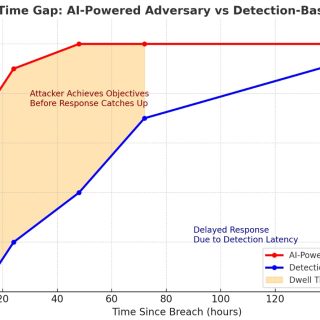
In today’s fast-evolving cybersecurity landscape, the need for a unified defense mechanism has never been more critical. As cyber threats grow more complex, solutions architected from the ground up, where every component is designed to work in concert, deliver a level of defense that piecemeal systems simply cannot match. While many cybersecurity companies rely on acquired products patched together to form a “security suite”, a purpose-built cybersecurity ecosystem provides unparalleled strength and efficiency. Let’s dive into why architecting cybersecurity as a cohesive whole offers advantages that patchwork systems can’t replicate.
1. Unified Intelligence Sharing
A ground-up cybersecurity system benefits from unified intelligence sharing across every layer. When components are designed from inception to communicate and work together, threat detection, response, and prevention happen in real time across the entire ecosystem. This inherent intelligence-sharing capability is nearly impossible to achieve with acquired products that lack the deep interconnections needed for instantaneous communication.
2. Streamlined Operations and Reduced Complexity
Products coded to work as a cohesive whole reduce operational complexity by design. Instead of layering various interfaces, systems, and workflows on top of each other, purpose-built solutions allow for a unified experience that security teams can navigate effortlessly. This reduces potential errors, streamlines processes, and frees up valuable time that would otherwise be spent managing integrations and addressing compatibility issues.
By contrast, combining various acquired products introduces layers of complexity and requires specialized training for each unique interface. Architecting a solution from scratch eliminates these inefficiencies and enables security teams to respond faster and more effectively.
3. Improved Scalability and Adaptability
A ground-up solution is inherently built to grow and adapt alongside evolving threats and organizational needs. Because it’s crafted on a consistent framework, scaling up or modifying capabilities is seamless. New functionalities can be introduced without re-engineering disparate modules, allowing organizations to stay ahead of emerging threats without risking protection gaps or downtimes.
With an acquired, patchwork solution, each new module typically requires extensive customization and integration, increasing the risk of incompatibility or delayed response times – a costly downside in today’s fast-paced threat environment.
4. Enhanced Visibility and Centralized Control
A purpose-built system provides comprehensive visibility from a single interface, enabling security teams to monitor and manage threats in real time. Because each component is designed to contribute to a unified security posture, organizations can make faster, more informed decisions. This eliminates the fragmented data and limited insights that often come with acquired products, where visibility is limited to individual components and lacks a centralized view.
An architected system provides a holistic view of an organization’s security landscape, empowering teams with the clarity needed to respond effectively to threats.
5. Seamless Incident Response and Automation
Architected solutions offer unparalleled incident response through streamlined, system-wide automation. Since each component is built to interact seamlessly, automated responses can be triggered across the system without requiring complex customizations. By contrast, attempting to synchronize responses across acquired components often leads to delayed or incomplete responses, as each module lacks the cohesive design needed for smooth operation.
In a purpose-built system, automation can quarantine a suspicious file, notify the security team, and enforce a network-wide block on similar threats in a single, cohesive process. This rapid coordination is invaluable in minimizing the damage from potential attacks.
6. Lower Total Cost of Ownership (TCO)
Bolted-on cybersecurity solutions are far from cost-effective at any stage and often lead to significantly higher total costs over time. Each acquired component typically brings along its own licensing fees, maintenance contracts, and compatibility challenges, resulting in compounding expenses. Integrating disparate modules demands costly customizations and substantial IT resources, as teams continually resolve conflicts, manage upgrades, and navigate compatibility issues.
In bolted-on systems, each new update or feature rollout often requires re-integration or re-testing across all components, leading to additional labor costs and operational disruptions. Licensing and support fees for multiple vendors also tend to be higher, while juggling disparate support channels can delay resolution times, adding both frustration and expense.
With this fragmented approach, each stage—implementation, maintenance, and scaling—introduces new costs and complexities, undermining any potential savings. By contrast, a solution built from the ground up is architected as a single, cohesive platform. This approach eliminates redundant maintenance and integration costs, offering streamlined updates, a unified support channel, and coordinated maintenance—all of which contribute to significantly lower direct and indirect costs. Purpose-built cybersecurity platforms reduce overhead at every stage, freeing resources for organizations to invest in strengthening their security infrastructure rather than paying to make disparate components function together.
7. Future-Ready Security
Cybersecurity is a dynamic field, and solutions must be designed to evolve. Purpose-built solutions can adapt seamlessly to new threats because each new capability reinforces and complements the entire system. The ongoing enhancements possible with architected solutions allow companies to stay at the forefront of security innovation without risking compatibility issues or downtime.
With patchwork systems, every new feature or module must be customized for compatibility, which can lead to delays or vulnerabilities. Architected solutions, on the other hand, evolve as a cohesive unit, ready to defend against the latest threats without missing a beat.
Conclusion: Architected Cybersecurity for Next-Level Defense
A cybersecurity system that is coded, designed, and built from the ground up is more than the sum of its parts. By making intelligence sharing, operational efficiency, and scalability central to the system’s foundation, architected solutions offer unmatched protection. In contrast, patching together acquired components may appear cost-effective initially, but it ultimately leads to higher complexity, limited intelligence sharing, and a less adaptable defense.
In the fight against cyber threats, architected solutions are the superior choice. They provide better protection, faster response, and lower total cost of ownership, making them indispensable for organizations committed to robust, future-ready cybersecurity.



